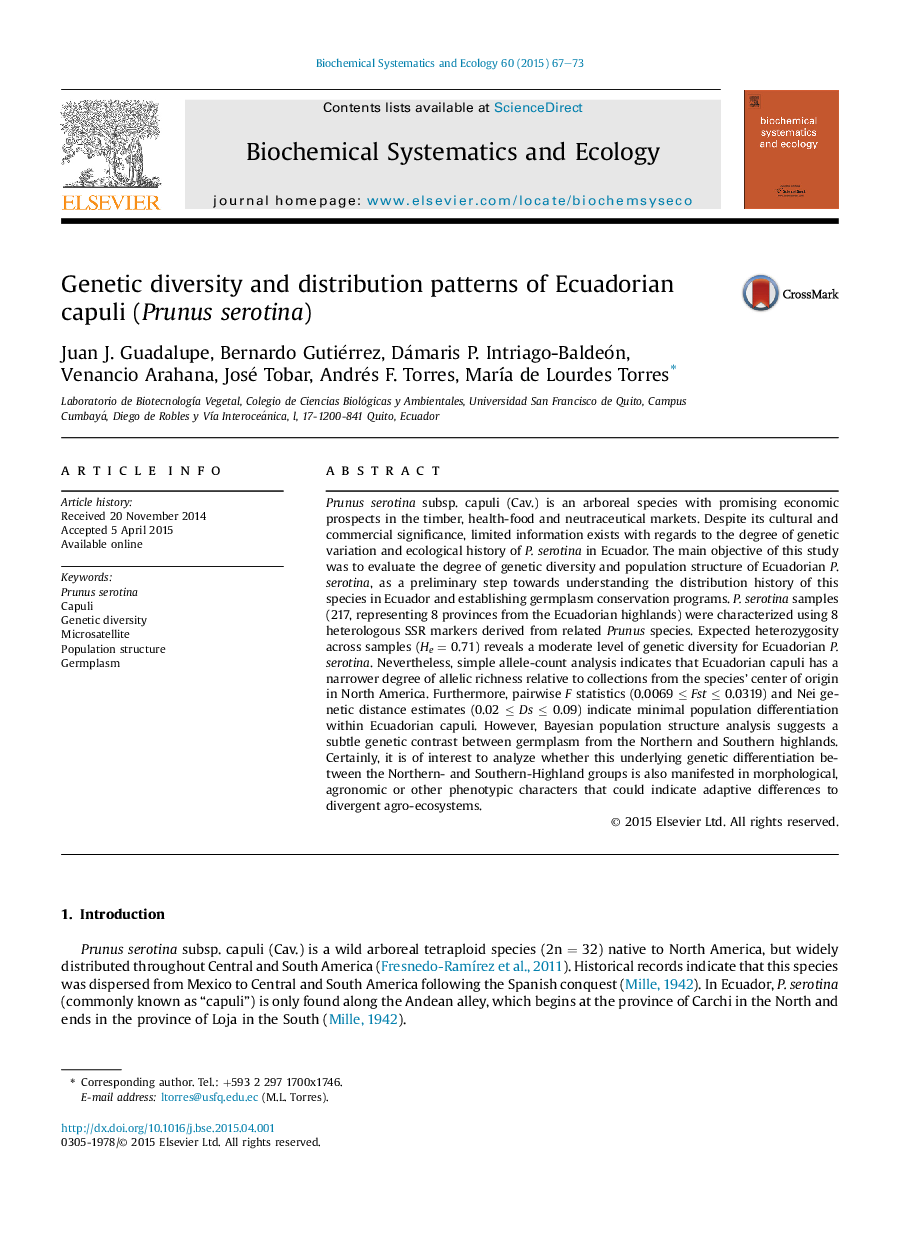| Article ID | Journal | Published Year | Pages | File Type |
|---|---|---|---|---|
| 7768072 | Biochemical Systematics and Ecology | 2015 | 7 Pages |
Abstract
Prunus serotina subsp. capuli (Cav.) is an arboreal species with promising economic prospects in the timber, health-food and neutraceutical markets. Despite its cultural and commercial significance, limited information exists with regards to the degree of genetic variation and ecological history of P. serotina in Ecuador. The main objective of this study was to evaluate the degree of genetic diversity and population structure of Ecuadorian P. serotina, as a preliminary step towards understanding the distribution history of this species in Ecuador and establishing germplasm conservation programs. P. serotina samples (217, representing 8 provinces from the Ecuadorian highlands) were characterized using 8 heterologous SSR markers derived from related Prunus species. Expected heterozygosity across samples (He = 0.71) reveals a moderate level of genetic diversity for Ecuadorian P. serotina. Nevertheless, simple allele-count analysis indicates that Ecuadorian capuli has a narrower degree of allelic richness relative to collections from the species' center of origin in North America. Furthermore, pairwise F statistics (0.0069 â¤Â Fst â¤Â 0.0319) and Nei genetic distance estimates (0.02 â¤Â Ds â¤Â 0.09) indicate minimal population differentiation within Ecuadorian capuli. However, Bayesian population structure analysis suggests a subtle genetic contrast between germplasm from the Northern and Southern highlands. Certainly, it is of interest to analyze whether this underlying genetic differentiation between the Northern- and Southern-Highland groups is also manifested in morphological, agronomic or other phenotypic characters that could indicate adaptive differences to divergent agro-ecosystems.
Related Topics
Physical Sciences and Engineering
Chemistry
Organic Chemistry
Authors
Juan J. Guadalupe, Bernardo Gutiérrez, Dámaris P. Intriago-Baldeón, Venancio Arahana, José Tobar, Andrés F. Torres, MarÃa de Lourdes Torres,
